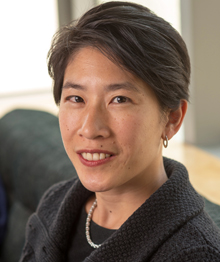
Jacqueline K. Barton, is an American chemist. She worked as a professor of chemistry at Hunter College (1980–82), and at Columbia University (1983–89) before joining the California Institute of Technology. In 1997 she became the Arthur and Marian Hanisch Memorial Professor of Chemistry and from 2009 to 2019, the Norman Davidson Leadership Chair of the Division of Chemistry and Chemical Engineering at Caltech. She currently is the John G. Kirkwood and Arthur A. Noyes Professor of Chemistry, Emerita.
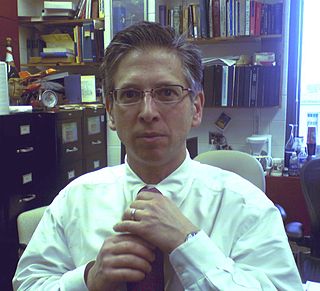
Paul S. Weiss is a leading American nanoscientist at the University of California, Los Angeles. He holds numerous positions, including UC Presidential Chair, Distinguished Professor of Chemistry and Biochemistry, Bioengineering, and of Materials Science and Engineering, and founder and editor-in-chief of ACS Nano. From 2019–2014, he held the Fred Kavli Chair in NanoSystems Sciences and was the director of the California NanoSystems Institute. Weiss has co-authored over 400 research publications and holds over 40 US and international patents.
Craig Jon Hawker is an Australian-born chemist. His research has focused on the interface between organic and polymer chemistry, with emphasis on the design, synthesis, and application of well-defined macromolecular structures in biotechnology, microelectronics, and surface science. Hawker holds more than 45 U.S. patents, and he has co-authored over 300 papers in the areas of nanotechnology, materials science, and chemistry. He was listed as one of the top 100 most cited chemists worldwide over the decade 1992–2002, and again in 2000–2010.
Tobin Jay Marks is an inorganic chemistry Professor, the Vladimir N. Ipatieff Professor of Catalytic Chemistry, Professor of Material Science and Engineering, Professor of Chemical and Biological Engineering, and Professor of Applied Physics at Northwestern University in Evanston, Illinois. Among the themes of his research are synthetic organo-f-element and early-transition metal organometallic chemistry, polymer chemistry, materials chemistry, homogeneous and heterogeneous catalysis, molecule-based photonic materials, superconductivity, metal-organic chemical vapor deposition, and biological aspects of transition metal chemistry.

Chad Alexander Mirkin is an American chemist. He is the George B. Rathmann professor of chemistry, professor of medicine, professor of materials science and engineering, professor of biomedical engineering, and professor of chemical and biological engineering, and director of the International Institute for Nanotechnology and Center for Nanofabrication and Molecular Self-Assembly at Northwestern University.

Peter John Stang is a German American chemist and Distinguished Professor of chemistry at the University of Utah. He was the editor-in-chief of the Journal of the American Chemical Society from 2002 to 2020.
Angela K. Wilson is an American scientist and former (2022) President of the American Chemical Society. She currently serves as the John A. Hannah Distinguished Professor of Chemistry, associate dean for strategic initiatives in the College of Natural Sciences, and director of the MSU Center for Quantum Computing, Science, and Engineering (MSU-Q) at Michigan State University.
Richard B. Kaner is an American synthetic inorganic chemist. He is a distinguished professor and the Dr. Myung Ki Hong Endowed Chair in Materials Innovation at the University of California, Los Angeles, where he holds a joint appointment in the Department of Chemistry and Biochemistry and the Department of Material Science and Engineering. Kaner conducts research on conductive polymers (polyaniline), superhard materials and carbon compounds, such as fullerenes and graphene.

Younan Xia is a Chinese-American chemist, materials scientist, and bioengineer. He is the Brock Family Chair and Georgia Research Alliance (GRA) Eminent Scholar in Nanomedicine in the Wallace H. Coulter Department of Biomedical Engineering, with joint appointments in the School of Chemistry & Biochemistry, the School of Chemical & Biomolecular Engineering, and Parker H. Petit Institute for Bioengineering & Bioscience at the Georgia Institute of Technology.
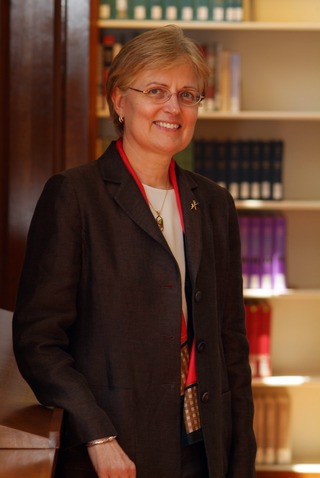
Elsa Reichmanis is an American chemist, who was the 2003 president of the American Chemical Society. She was elected a member of the National Academy of Engineering in 1995 for the discovery, development, and engineering leadership of new families of lithographic materials and processes that enable VLSI manufacturing. She was also inducted into the National Academy of Inventors in 2020. She is currently the Anderson Endowed Chair in Chemical and Biomolecular Engineering at Lehigh University. She previously served on the faculty at The Georgia Institute of Technology. Reichmanis is noted for her research into microlithography, and is credited for contributing to the "development of a fundamental molecular level understanding of how chemical structure affects materials function leading to new families of lithographic materials and processes that may enable advanced VLSI manufacturing".
Kourosh Kalantar-zadeh is an Australian scientist involved in research in the fields of materials sciences, electronics, and transducers. He is best known for his works on two-dimensional semiconductors, ingestible sensors and liquid metals. He led his group to the invention of an ingestible chemical sensor: human gas sensing capsule.
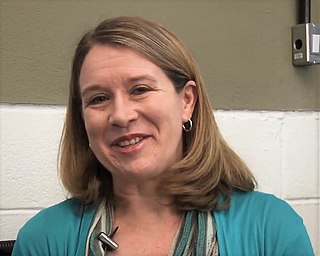
Christy Lynn Haynes is a chemist at the University of Minnesota. She works at the interface of analytical, biological, and nanomaterials chemistry.
Jill Millstone is a professor of chemistry at the University of Pittsburgh. She works on metal-ligand chemistry in nanoparticle synthesis. She is the American Chemical Society Kavli Foundation Emerging Leader in Chemistry Lecturer for 2018.
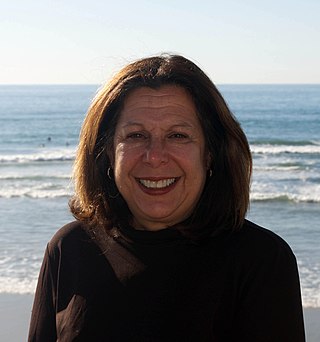
Vicki H. Grassian is a distinguished professor in the department of chemistry and biochemistry at the University of California, San Diego. She also holds the distinguished chair in physical chemistry.

Yi Cui is a Chinese-American materials scientist, specializing in nanotechnology, and energy and environment-related research. Cui is the Fortinet Founders Professor of Materials Science and Engineering, and by courtesy, of Chemistry at Stanford University. He currently serves as the director of the Precourt Institute for Energy, succeeding Arun Majumdar and Sally Benson. He has been named the inaugural faculty director of the Sustainability Accelerator within the Stanford Doerr School of Sustainability. He also serves as a co-director of the Bay Area Photovoltaics Consortium, the Battery500 Consortium, and the StorageX initiative. He is a faculty member of Stanford Photon Science of SLAC, principal investigator at the Stanford Institute for Materials & Energy Sciences, and a senior fellow at Stanford Woods Institute for the Environment. He is an elected member of the National Academy of Sciences and European Academy of Engineering, and Fellow of the American Association for the Advancement of Science (AAAS), Materials Research Society (MRS), Electrochemical Society (ECS), and the Royal Society of Chemistry (RSC). He has been one of the world's most-cited researchers and most influential scientific minds. He has published over 560 research papers with an H-index of 262. He currently serves as the Executive Editor of Nano Letters from ACS Publications.

Ying Shirley Meng is a Singaporean-American materials scientist and academic. She is a professor at the Pritzker School of Molecular Engineering at the University of Chicago and Argonne Collaborative Center for Energy Storage Science (ACCESS) chief scientist at Argonne National Laboratory. Meng is the author and co-author of more than 200 peer-reviewed journal articles, two book chapter and six patents. She serves on the executive committee for battery division at the Electrochemical Society and she is the Editor-in-Chief for MRS Energy & Sustainability.
Emily A. Weiss is the Mark and Nancy Ratner Professor of Chemistry and director of the Photo-Sciences Research Center at Northwestern University. Her research considers the optical and electronic properties of nanostructures, including hybrid organic–inorganic quantum dots. She was a two-time finalist in the Blavatnik Awards for Young Scientists.

Danna Freedman is an American chemist and the Frederick George Keyes Professor of Chemistry at the Massachusetts Institute of Technology. Her group's research focuses on applying inorganic chemistry towards questions in physics, with an emphasis on quantum information science, materials with emergent properties, and magnetism. Freedman was awarded the 2019 ACS Award in Pure Chemistry and a MacArthur Fellowship in 2022.
Susan Perkin is a British chemist who is a Professor of Physical Chemistry at the University of Oxford. Her research considers the physics of liquids and soft matter. She was awarded the 2016 Harrison-Meldola Memorial Prize and named the Soft Matter Lecturer of 2018. In 2015 Perkin was awarded a European Research Council starting grant and in 2020 she was awarded a European Research Council consolidator grant.
Philipp Kukura FRSC is Professor of Chemistry at the University of Oxford, and a Fellow of Exeter College, Oxford. He is best known for pioneering contributions to femtosecond stimulated Raman spectroscopy (FSRS), interferometric scattering microscopy (iSCAT) and the development of mass photometry.
